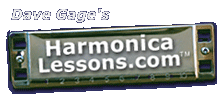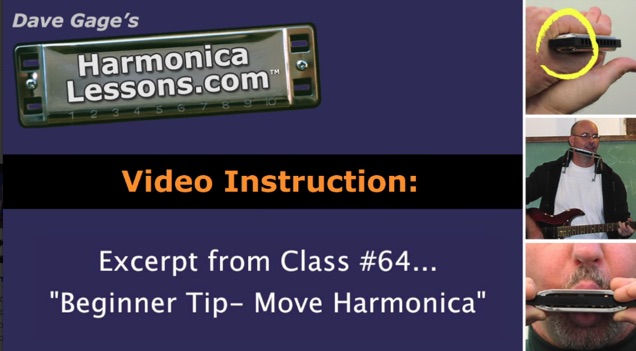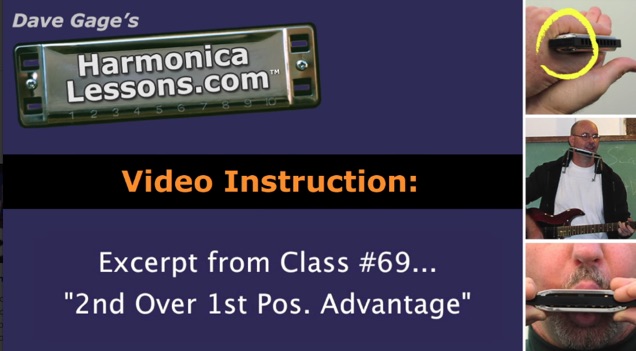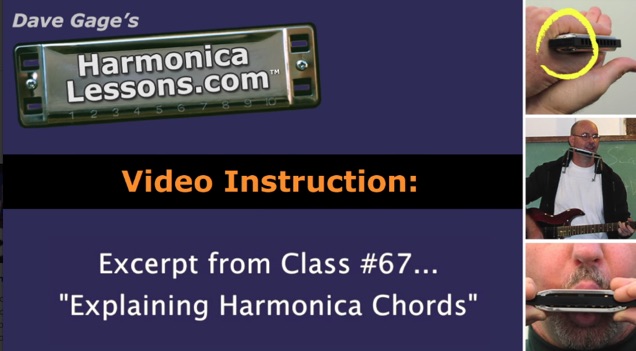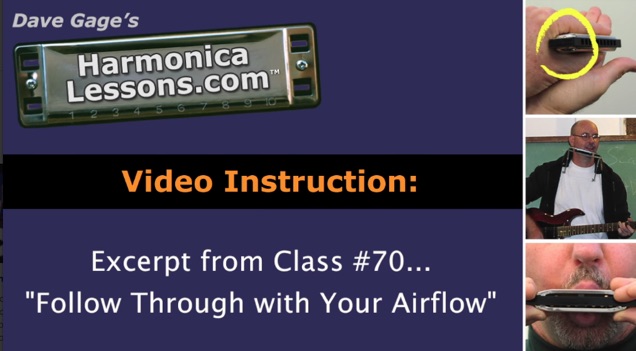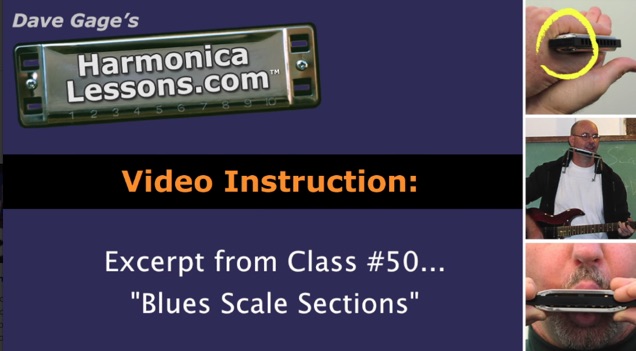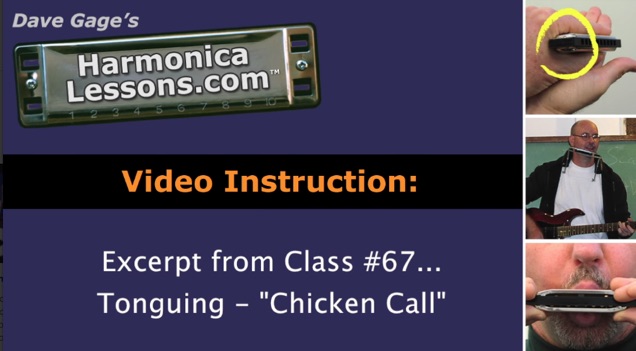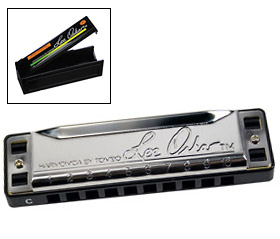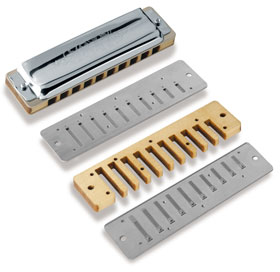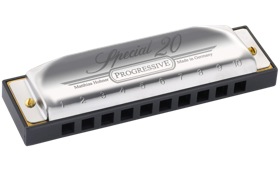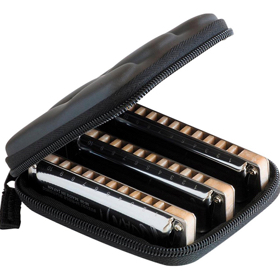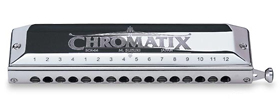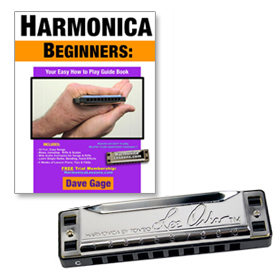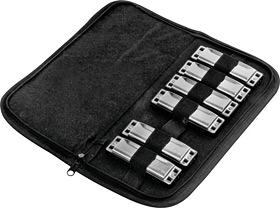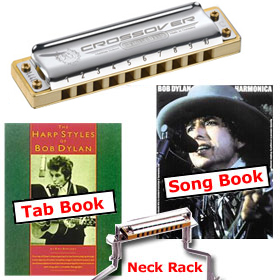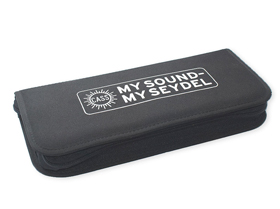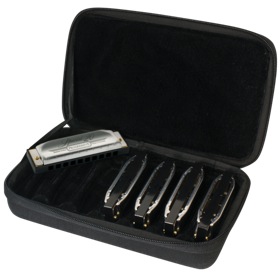Breathing: General Information
Proper breathing technique corrects the problems of a 'thin' weak sound and also fixes trouble draw notes like holes 2, 3, 7, 8, 9, that don't seem to play well, play in tune, or at all (nope, it's not a bad harmonica). Be sure you are fairly comfortable with the more basic techniques of Single Notes and Holding/Hand Effects before spending too much time on this more advanced approach to breathing.
|
-
General Information
- Correct breathing for the harmonica means NOT sucking and NOT blowing into the harmonica- Sucking and blowing occurs with your lips and at the front of the mouth. This is the most instinctive method of getting air through the harmonica, but it is not correct.
- Put the harmonica as far into your mouth while maintaining single notes- The easiest way to breathe correctly with the harmonica is to play your single notes with the harmonica as far into your mouth as possible. The further you put the harmonica into your mouth without losing the single note, the better. This will allow you to bypass the "sucking mechanism", the front of your mouth and lips, and force you to breathe correctly from your diaphragm. Try making a "ha" sound for every exhale (blow note) and every inhale (draw note) that you play. This applies to the 'whistle' and the 'tongue blocking' methods of playing single notes.
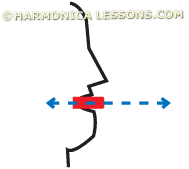
Airflow should always be parallel to the harmonica,
reed plate, and reed itself.
- Good tone, volume, and power- The best tone, volume, and power are derived almost exclusively from correct breathing technique on the harmonica.
AUDIO: "Breathing Example"
Breathing (correct & incorrect) on Hole 4 on "C" diatonic.
- "Survival breathing" (for beginners)- It should be noted that the correct breathing on harmonica is not to be confused with what we might refer to as "survival breathing". "Survival breathing" on harmonica will develop naturally the more you play the harmonica. All beginning harmonica players get very winded and tired when they play for more than just a few minutes. Time, and conditioning through repetition will solve this problem. Remember to stay relaxed and try to breathe with, through, and around the harmonica. Don't force it.
- Your stomach always moves first- When breathing correctly on the harmonica, the first thing, physically, that should happen when you play a note, is that your stomach (diaphragm) moves. This movement creates the airflow that ultimately makes the sound come out the harmonica.
- Different names for breathing technique- Correct breathing is sometimes referred to as "diaphragmatic breathing", "deep breathing", "Zen breathing", "stomach breathing", "3-step breathing", or "yoga breathing".
- Breathing taught in other disciplines- You may already be familar with correct breathing techniques from another discipline (i.e. martial arts, weight lifting, running, or some other sport), and in that case, you might save a bit time compared to someone who has not consciously worked with this technique before.
- Harmonica breathing is similar, yet different- The correct breathing for harmonica is similar to the breathing taught for singing or playing virtually any horn or wind instrument, yet slightly more complex. Most sports, martial arts, singing, and horn playing involve only control of your breath for the exhale portion of your breathing.
- Breathing for harmonica can be more difficult- Harmonica not only involves the exhale and the inhale aspects of breathing, but harmonica playing emphasizes the inhale portion (for 2nd position) which is much less natural for most of us. We always talk and sing when we are in the exhale mode of breathing. We don't use the inhale mode of breathing for much of anything except for the breathing itself. Because of this, most people find that the correct breathing for harmonica is more difficult and complex then they might have expected. Don't let this scare you off, it may take some time to get the full, rich, loud sound that pro players get, but with the following steps and some practice, you will be able to do it.
Click here to visit the next breathing page, "Technical Tips/A Breathing Drill".
